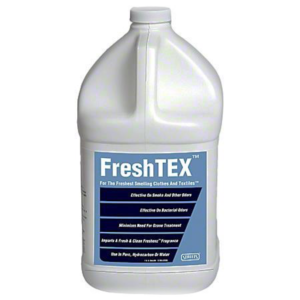Collar Problems On Shirts
Men’s shirts can have a variety of problems local only to the collar and neck area due to defects in manufacture, damage
or discolorations from conditions of use and/or other problems caused by adverse reactions to commercial laundering.
Drycleaning and laundering are both processes that subject the entire shirt and all components to the same treatment
and cannot in and of the process itself originate these types of problems.
Collar Shrinkage
Shrinkage is a characteristic built into a shirt fabric during manufacturing. Tensions are applied to yarns in spinning and
again in weaving. This tension and pulling tends to stretch the fabric. When shirts are cut and sewn from this stretched fabric, some shrinkage will eventually develop when the shirt is washed no matter how the washing is done. This shrinkage can be two or three percent. By properly preshrinking the fabric, the manufacturer can avoid excessive shrinkage. In other instances, the shirt is cut slightly larger than the final shirt size so that the shrinkage will not affect the fit of the collar after repeated laundering. A shirt collar that is intended to be 15 ½ inches may be
cut ¼ to ½ inch larger to allow for some relaxation. When finishing a man’s shirt it is always a good procedure to
“snap” the collar by pulling it outwards with both hands while it is still wet prior to forming it around the shirt collar press. This process can recover some slight relaxation that occurs during the agitation of washing. Complaints can be verified by measuring the collar from the center of the collar button to the end of the buttonhole. If there is slight shrinkage noted, then wet out the collar and try the ‘snapping” procedure before repressing.
Collar Puckering
Shirt collars are constructed with two layers of shirt fabric with an interfacing material in between for shape and stability. Sometimes the facing material shrinks and separates causing excess material in the shell fabric. Many times you can keep the puckers and creases on the underside of the collar while pressing the top side smooth enough for wear, but not always. If the interfacing shrinkage is so excessive that it affects the neck fit or puckers the topside fabric, there is no restoration.
Stains Along the Entire Collar
After commercial pressing, sometimes dark spots appear all over the collar, but not in the neck or anywhere else near the collar. This is another interfacing problem. During manufacture, dots of adhesive are applied all over the facing material and then the facing is fused to the collar fabric by melting the adhesive with heat and pressure. The two materials will bond together as it all cools. If the bonding agent is too heat sensitive, it can melt again during the normal temperatures of professional shirt pressing and leach out to the collar surface and cause staining. This situation can only be controlled by the manufacturer using material binders that will not melt at normal shirt finishing temperatures. When this staining occurs, it cannot be removed.
Discoloration on the Shirt Collar Tips
This problem arises when just the points of the shirt collar show small dark stains after commercial finishing. A heat sensitive adhesive is applied to the collar facing and collar fabric in the tips prior to folding and stitching. This is most often substandard collar bonding agents can melt during normal professional cleaning, leaving glue stains similar to those on this collar.
Collar Yellowing
Collars can sometimes appear a little yellow after laundering, while the rest of the shirt is still white. In most cases, this
is caused by what is known as a “bleach-retentive” interfacing. The facing has been treated with a resin that absorbs
bleach from any normal commercial laundry formula and doesn’t rinse clear during neutralizing and rinsing operations.
When the shirt collar hits the heat of the press, the interfacing yellows and then the whole collar appears yellow. Treating
the shirt in a dye stripper (reducing bleach) bath followed by rewashing may restore the whiteness.
Stains or Color Change in the Neck Fold Area
As a shirt is in use, the neck band and collar fold area are exposed to hair tonics and gels, medicines, skin tanners or
other skin preparations, colognes, after shaves, body oils, perspiration, as well as just ground in soils. Any of these
substances can cause progressive problems as they build up on the fabric. Some of these conditions of wear cause dark stains at the neck area that are not readily removed by laundering. This staining may require local stain removal processes with a solvent based prespotters and then drycleaning to break up some solvent-soluble oils. The shirt can then be laundered normally for a much-improved appearance. If a shirt is cleaned after each wearing, stain build-up is avoided and many times these tough to remove collar stains will not become permanent. Another adverse condition that occurs in the neck and collar fold area on colored shirts is color change or color loss. Dyes can be affected by solutions containing alcohol or mild oxidizing agents or both. These solutions could include; after shave lotions, hair tonics or gels, skin fresheners, cologne, medicinal lotions, depilatories, acne creams, skin tanners, as well as many other skin treatments. Sometimes, the dye damage is not immediately visible because it is masked by the build up of soils. When the soil is reduced in cleaning, the color change becomes more visible. There is no restoration.
Pilling or Fraying Along the Collar Fold
Repeated rubbing and abrasion during wear can eventually cause fabric damage. In some cases, the fibers in the collar
fold will just work loose and cause pilling in the area. When a shirt fabric begins to pill in the neck area, the loose
fibers may remain attached to the fabric and not be washed away during laundering. In more severe abrasion cases, the neck fold can actually fray resulting in thin areas and eventually holes. This can occur in both all cotton fabrics, as well as blends. Because of the fold stress itself and repeated rubbing in wear, this area is progressively weakened over time. At some point, usually during the agitation of cleaning, these already thin weakened areas will come apart. Repeated rubbing and abrasion caused this collar’s frayed damage. The collar stain on this shirtdeveloped after the adhesive
bonding agent inside the material melted during the heat of finishing.





